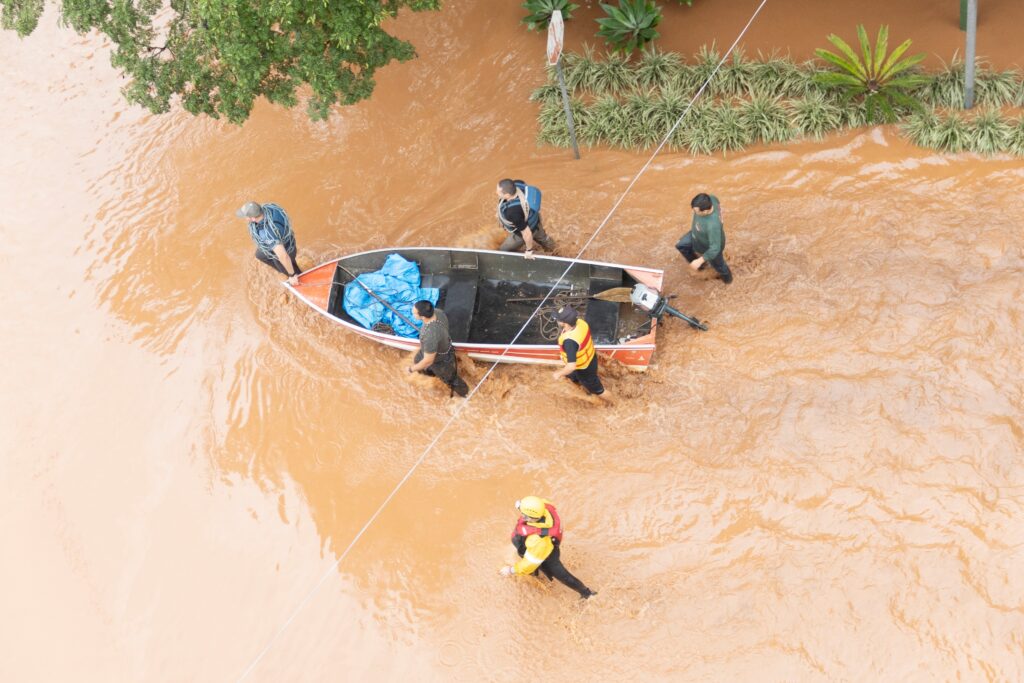A tropical storm is set to strike Australia’s eastern coast early Saturday morning, prompting mass evacuations and widespread power outages. Authorities have evacuated tens of thousands of residents, with over 230,000 households left without power. The storm, originally named Cyclone Alfred, has been downgraded to a tropical low. Despite this, it still poses a significant risk with winds expected to reach up to 85 km/h.
The storm currently sits off Bribie Island, moving slowly northward. Weather experts predict it will likely make landfall somewhere between Bribie Island and Maroochydore, affecting thousands of people. The Bureau of Meteorology has warned of the ongoing threat of heavy rainfall and flooding.
Severe Weather Risks and Flash Flooding
Meteorologists are sounding alarms for the next few days as the storm continues to approach the coast. According to Bureau of Meteorology expert Miriam Bradbury, the storm’s impact could include intense rainfall. “We expect 24-hour rainfall totals to exceed 200mm in some areas,” she stated.
Bradbury also confirmed that flash flooding would remain a threat throughout the weekend. The already weakened cyclone caused significant flooding, and authorities are concerned that water levels will rise as the storm lingers over land.
As the storm moves slowly, authorities have warned residents of the potential for worsening conditions. “The storm is moving at what we call a ‘walking pace,’” Bradbury explained. This slow movement could lead to even greater risks of flash floods, especially as the storm remains erratic in its path.
One particularly alarming incident occurred when floodwaters swept a man’s car into a river in New South Wales. Local police have reported the man as missing. As of now, nearly 4 million people in Queensland and northern New South Wales remain in the storm’s potential path.
Communities Prepare for Impact
Residents in the storm’s expected path are preparing for the worst. People like Stephen Valentine from Logan City are taking extra precautions. Valentine and his wife have stocked up on 30 liters of water, non-perishable food, and secured rooms away from windows. “We’re as ready as we can be for something we’ve never experienced before,” he shared.
While Queensland often faces cyclones, they typically do not reach this far south. The size and intensity of the storm are unprecedented for many in this region. Authorities are advising people to stay indoors and avoid travel if possible. Additionally, heavy rain and rising tides are expected to create further challenges for coastal communities.
Evacuations and School Closures
Prime Minister Anthony Albanese has reassured Australians in his public statements. “These are tough times, but Australians are tough people,” he said. However, the storm’s severity has prompted significant disruptions across the region.
Almost 1,000 schools have been closed in anticipation of the storm, and public transport services are suspended. Airports have been closed for safety reasons, and all elective surgeries have been canceled. Authorities are also urging people to stay out of flood-prone areas to avoid putting lives at risk.
The last significant cyclone to hit the region was Cyclone Wanda in 1974, followed by Cyclone Zoe shortly after. But this storm has raised further concerns due to its slow and unpredictable movements. Many local communities are taking matters into their own hands. Councils have opened sandbag depots for residents to protect their homes from rising floodwaters.
Brisbane Residents Face Long Waits for Sandbags
Brisbane resident Anthony Singh waited for four hours on Wednesday to collect sandbags from the depot. “It’s surreal. We know it’s coming, but it’s so quiet,” he said, clearly anxious about the storm’s impending arrival.
Other residents have been doing their part to help. Mark Clayton, who assisted in the preparation, said, “We’ve shoveled over 140 tonnes of sand. People are worried. We’re all wondering, ‘Will the buildings stay up? Will roofs hold?’”
Supermarkets have also closed their doors in anticipation of the storm, as locals prepare by buying essential supplies. Despite the warnings, some surfers have continued to hit the waves, finding excitement in the approaching storm. “This is what we look forward to,” said surfer Jeff Weatherall, who has spent five days surfing at Kirra Beach.
Warnings and Appeals for Safety
While surfers continue to take advantage of the rising waves, the Australian government continues to emphasize the dangers of the storm. Prime Minister Albanese called on residents to take the cyclone warnings seriously. “This isn’t a time for sightseeing,” he urged. “Please stay safe. Be sensible.”
With the storm set to make landfall soon, authorities are urging residents to heed all safety measures and remain cautious. As the cyclone continues its unpredictable path, Australian communities brace themselves for the potential devastation. Experts continue to monitor the storm, keeping the public informed of any significant changes to its trajectory.
The government’s top priority is ensuring the safety of its citizens. Emergency responders are ready to assist in any way possible, with rescue teams on standby in flood-prone areas. The next few days will be crucial in determining how the storm will affect the region, but authorities are doing everything possible to minimize the risk.
For updates on the cyclone and evacuation efforts, visit New York Mirror.


